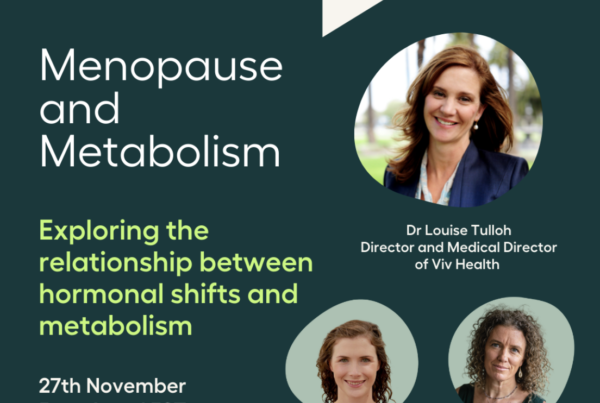Cardiovascular disease (CVD) is the leading cause of death among women, with risk increasing during midlife, especially around menopause. Hormonal changes during this transition can negatively affect metabolism, blood lipids, and cardiovascular health. Here’s a look at how lipids change during menopause and how you can protect your heart.
Blood Lipids and Their Role
Cholesterol
Cholesterol is essential for cell membranes, brain and nerve cells, and bile production. It helps the body absorb fats, fat-soluble vitamins, and produce hormones like oestrogen, testosterone, and cortisol. While the body produces most of its cholesterol, dietary sources also contribute.
Triglycerides
Stored in fat cells, triglycerides provide energy for growth and metabolism. They are formed in the intestine and liver from fatty acids, some of which must come from food.
Lipoproteins
Fats like cholesterol and triglycerides cannot circulate freely in blood, which is mostly water. They are packaged with proteins into particles called “lipoproteins”. These include-
- Chylomicrons
- High-density lipoproteins (HDL)
- Low-density lipoproteins (LDL)
- Very low-density lipoproteins (VLDL).
Lipoproteins are regulated by the body, but daily factors like stress, diet, exercise, and metabolism can cause cholesterol levels to fluctuate by ~10% and triglycerides by ~25%. Different lipoproteins have different functions, either transporting triglycerides or cholesterol to and from cells and tissues where they are formed, stored or used for energy and other cell functions.
Certain lipoproteins, such as those containing Apolipoprotein B (ApoB) (chylomicrons, VLDL, LDL, and Lp(a)*), are key drivers of atherosclerosis. This condition involves fatty deposits in artery walls and results from high levels of atherogenic lipoproteins, inflammation, and trauma from high blood pressure. It is the core pathology behind atherosclerotic cardiovascular disease (ASCVD) which is a factor not only in heart disease but also non-Alzheimer’s dementia, renal disease and peripheral vascular disease.
*Note on Lipoprotein (a) (Lp(a))
Lp(a), a highly atherogenic LDL subgroup, tends to be elevated in familial hyperlipidaemia. It indicates higher ASCVD risk, requiring aggressive risk factor management.
- Levels >50 ng/dL pose increased risk.
- Lp(a) does not change over time, so a single lifetime measurement suffices.
- Currently, there are no treatments for lowering Lp(a).
Measuring blood lipids
Fasting blood tests measure cholesterol and its distribution among the various lipoproteins. Common lipid parameters include:
- Total Cholesterol: <5.5 mmol/L
- LDL Cholesterol: <3.5 mmol/L
- HDL Cholesterol: >1.0 mmol/L (men), <1.3 mmol/L (women)
- Triglycerides: <2.0 mmol/L
- ApoB: <80-100ng/dl
ApoB levels are valuable in assessing risk and monitoring treatment as they reflect the number of actual harmful particles. This test is not routinely ordered and requires a specific request from your doctor.
Further assessment of the vascular system can be done by looking at the heart arteries themselves. A coronary calcium score (CAC), measured by CT scan, indicates that the body has formed calcified atherosclerotic plaques. It does not show non-calcified plaques. A CT angiogram can show evidence of arterial narrowing from plaques. There is a risk with some investigation methods, such as catheter angiogram, which may be performed to explore blockages causing symptoms or when a therapeutic procedure eg insertion of a stent, is being considered. Evidence of plaques in the carotid arteries of the neck can safely be assessed using ultrasound. The presence of plaque is a strong prompt to take your lipids seriously.
Lipid Changes During Menopause
As hormones change during menopause, so do cardiometabolic risk factors. Common lipid changes occur in the few years before and after your last period, are not a result of ageing alone, and include:
- Increased total cholesterol
- Increased LDL
- Increased ApoB levels
- Elevated triglycerides (especially in metabolic syndrome).
Steps to Protect Your Heart Health
- Focus on Diet
- Reduce processed carbohydrates and saturated fats.
- Increase fibre-rich foods (e.g., grains, seeds, beans, fruits and vegetables).
- Include healthy fats, such as omega-3s from fish or nuts.
- Limit sugary and starchy foods if triglycerides are elevated.
- Get Moving
Regular physical activity, such as brisk walking for 30 minutes daily, can:- Lower triglycerides.
- Improve lipid profiles and cardiovascular health.
- Monitor your risk factors
- Schedule annual lipid tests to track total cholesterol, ApoB, LDL and triglycerides.
- Discuss personalised treatment goals based on your risk profile.
- Consider Medication
When lifestyle changes are insufficient, medications may be recommended, including:- Statins: Reduce LDL particles by blocking cholesterol production in the liver.
- Cholesterol Absorption Inhibitors: Prevent cholesterol absorption in the gut.
- PCSK9 Inhibitors: Enhance LDL clearance from the bloodstream.
- Bile Acid Sequestrants: Prevent cholesterol reabsorption in the intestines (e.g., psyllium husk)
MHT and lipids
Further research is needed to determine whether menopausal hormone therapy (MHT) improves lipid profiles. Current evidence suggests that MHT generally reduces harmful lipids; however, several factors influence these effects:
- Oral vs Transdermal Oestrogen: Oral oestrogen has a more significant impact on liver function, which plays a key role in lipid metabolism. It appears that oral oestrogen lowers LDL cholesterol (LDLc) more effectively than transdermal oestrogen.
- Oestrogen Alone vs Combination Therapy: The addition of progestogen to oestrogen may reduce the lipid benefits seen with oestrogen alone. Importantly, most studies have not included body-identical progesterone, so its specific effects remain unclear.
- Testosterone and SHBG: Higher levels of free testosterone and lower levels of sex hormone-binding globulin (SHBG) have been associated with increased coronary calcium scores, potentially affecting cardiovascular risk.
While these findings are of interest, the available data are insufficient to recommend the use of MHT specifically for managing lipid profiles. Further high-quality research is required to better understand these relationships and the overall impact on cardiac outcomes.
Women’s heart health has often been overlooked. Women may present with symptoms differing from men, receive fewer investigations, and face pervasive misinformation. For example, it’s a misconception that cholesterol solely comes from food or that statins are unnecessarily risky.
Take your heart health seriously—understand your risks and take preventive steps. ASCVD is largely preventable with proactive care.
For further reading
This information is for general educational purposes only and does not constitute medical advice. Please see your health professional for advice that is personalised to you.
Key Take Aways
Heart disease is the leading cause of death in women worldwide
High blood lipids are a preventable risk factor for heart disease
Other resources
In depth 3 part podcast series on lipids with Dr Tom Dayspring
The Proof Lipid Series






